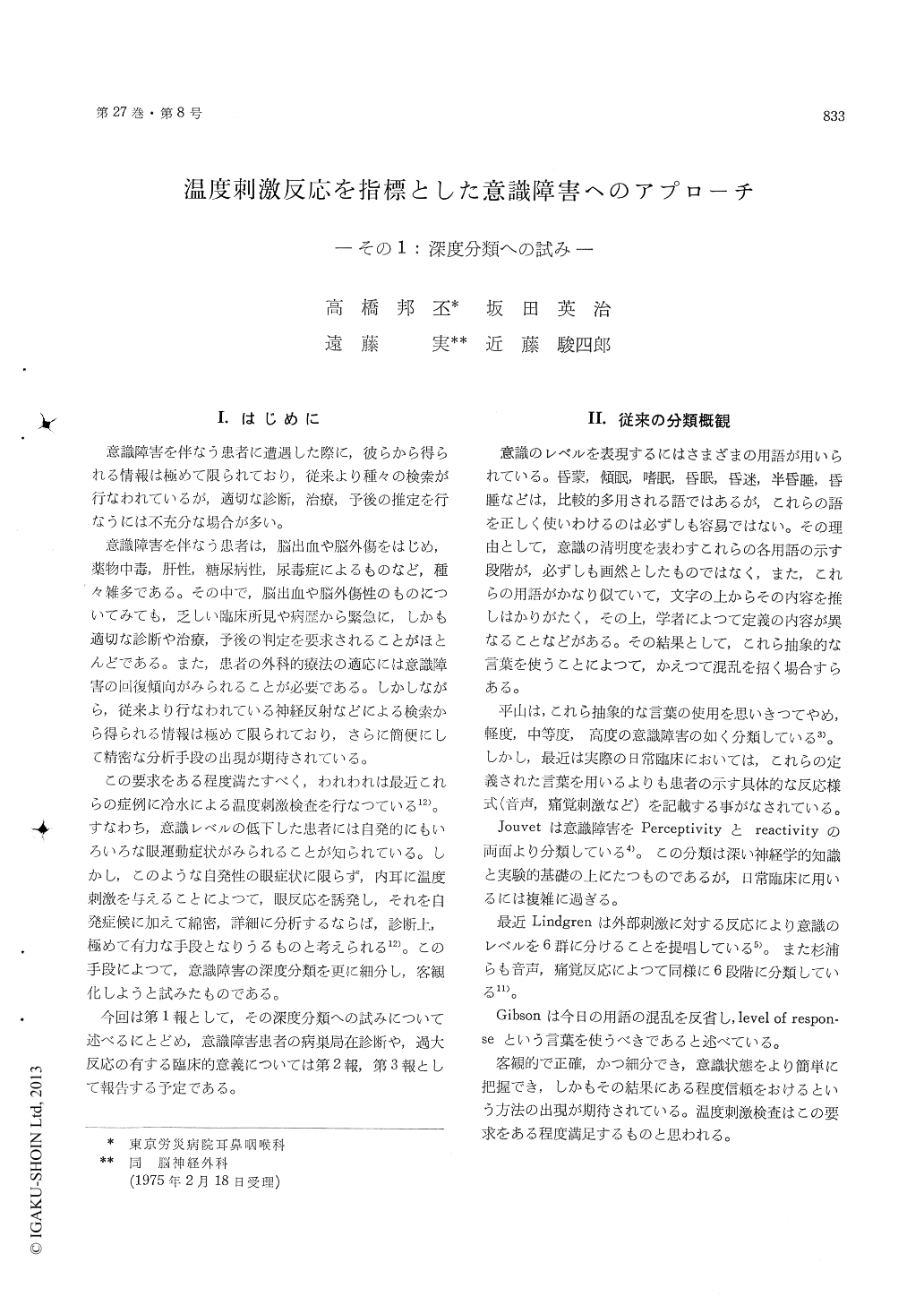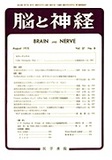Japanese
English
- 有料閲覧
- Abstract 文献概要
- 1ページ目 Look Inside
I.はじめに
意識障害を伴なう患者に遭遇した際に,彼らから得られる情報は極めて限られており,従来より種々の検索が行なわれているが,適切な診断,治療,予後の推定を行なうには不充分な場合が多い。
意識障害を伴なう患者は,脳出血や脳外傷をはじめ,薬物中毒,肝性,糖尿病性,尿毒症によるものなど,種々雑多である。その中で,脳出血や脳外傷性のものについてみても,乏しい臨床所見や病歴から緊急に,しかも適切な診断や治療,予後の判定を要求されることがほとんどである。また,患者の外科的療法の適応には意識障害の回復傾向がみられることが必要である。しかしながら,従来より行なわれている神経反射などによる検索から得られる情報は極めて限られており,さらに簡便にして精密な分析手段の出現が期待されている。
When we observe unconscious patients, it is im-portant firstly, to know their state of consciousness.Up to now, there are various methods to try toknow it, but it is not always enough.
Eye movement of patients, especially spontaneousnystagmus, sometimes give valuable imformationsfor neurological diagnosis. In addition, it will bea great help to get imformations not only sponta-neous nystagmus, but also provoked nystagmus bycaloric stimulation. Because, the eye movement isalso influenced by the level of consciousness, andwhen the patient fall in unconscious state, fastcomponent of the spontaneous nystagmus will alsobe suppressed, so it will be difficult to recognizethe spontaneous nystagmus. Therefore, we gave astrong stimulation from the inner ear, and tried toknow the level of consciousness observing howthe fast component of the caloric nystagmus aredisturbed.
Cold caloric test was performed on 40 cases ofpatients in the state of disturbed consciousness, toget the imformation of its level. Cause of thealtered states of consciousness were quite varied,such as vascular disorder, brain tumor, traumaetc. Tests had done at the same patient frequentlyduring the course of altered state of consciousness,and the reactions change in proportion to the degreeof consciousness disturbances.
The results of caloric reactions and the data ofthe other neurological examinations were collated,and it is found that the caloric reaction shows acontinuous changes in proportion to their level ofconsciousness, even if the cause of the unconscious-ness are different. Relations between consciousnessand caloric nystagmus are discussed, and followingclassification was given according to the differentstate of consciousness.
1) Normal vestibulo-ocular reaction, regular beatof nystagmus, and fast component is full.
2) Slightly disturbed fast component, irregularbeat of nystagmus, tendency of deviation to thestimulation side.
3) Deviation of both eyes to the stimulation sidewith fine nystagmus.
4) Tonic conjugate deviation to the stimulationside without nystagmus. (absence of the fast com-ponent.)
5) Very slow monocular deviation of the ipsilateraleye to the stimulation side, and contralateral eyehardly deviate to the stimulation side, or remainsin front.
6) Tonic vertical conjugate deviation.
a) downward, b) upward.
7) No vestibular reaction. (no nystagamus, nodeviation)
This classification corresponds well to other neu-rological signs and symptoms of the patient inaltered state of consciousness. Of course, it is alsoimportant that the caloric nystagmus will be modi-fied by the localization of the lesion in the centralnervous system. We will report about them innext report.

Copyright © 1975, Igaku-Shoin Ltd. All rights reserved.


